Greetings Hive friends and Petals community.
Saludos amigos de Hive y comunidad de Petals.
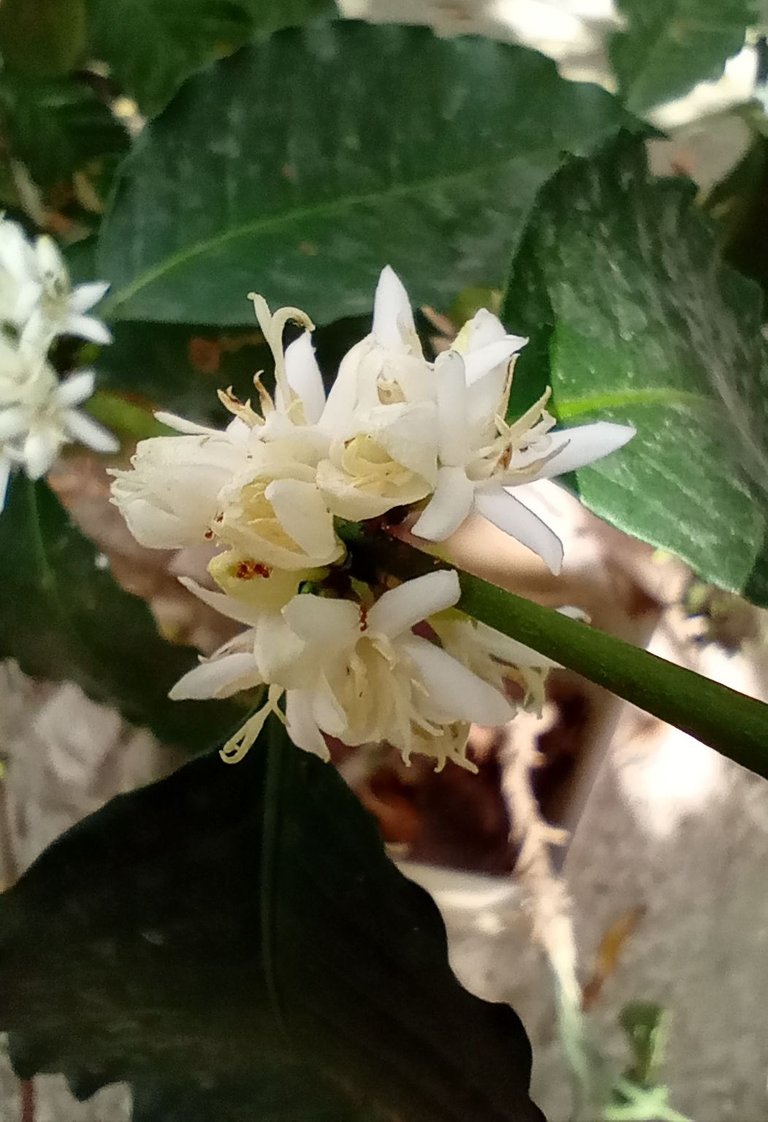
We bought this coffee plant during a crisis in my country in which we had to queue very often to buy products from the basic family basket.
Among the most scarce items were corn flour, sugar, wheat flour and coffee. Also personal hygiene products were difficult or impossible to obtain.
Our purchasing power was reduced so much that many of us devised ways of subsisting by growing crops in our yards, raising barnyard animals, and making our own toiletries.
Esta planta de café la compramos durante una crisis en mi país en la que teníamos que hacer colas con mucha frecuencia para comprar productos de la cesta básica familiar.
Entre los rubros que más escaseaban estaban la harina de maíz, el azúcar, la harina de trigo y el café. También los productos de aseo personal eran difíciles o imposibles de conseguir.
Nuestro poder adquisitivo se redujo tanto que muchos ideamos modos de subsistir sembrando en nuestros patios, criando animales de corral, y haciéndonos nuestros propios productos de aseo.
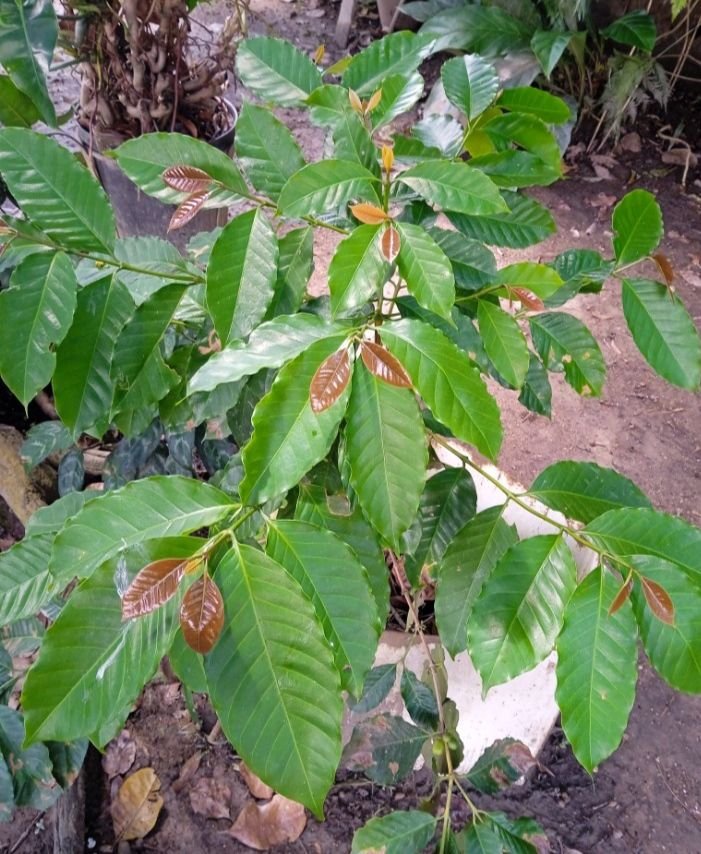
One of the things that worried me the most was the possibility of not being able to get more coffee.
That is why we planted 3 coffee plants on our plot and one at my mother's house. This last one is the only one left and it has already bloomed about 3 times.
Una de las cosas que más me preocupaba era la posibilidad de no poder consegir café.
Por eso llegamos a sembrar 3 plantas de café en nuestra parcela y una en casa de mi mamá. Esta última es la única que queda y ya ha florecido unas 3 veces.
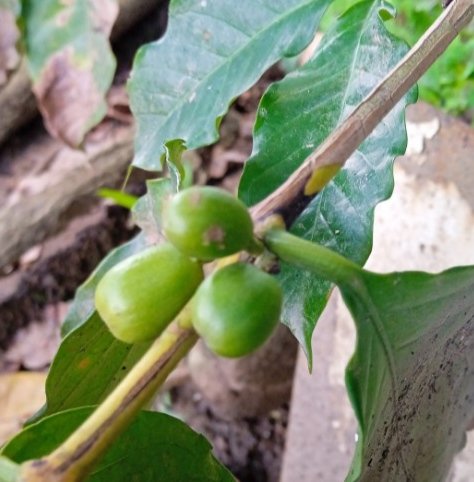
To our surprise, the fruits turned out not to be red, like most, but yellow. I didn't even know coffee plants and the ones I had seen in photos had red fruits.
Para nuestra sorpresa los frutos resultaron no ser rojos, como la mayoría, sino amarillos. Yo ni siquiera conocía las plantas de café y las que había visto en fotos eran de frutos rojos.
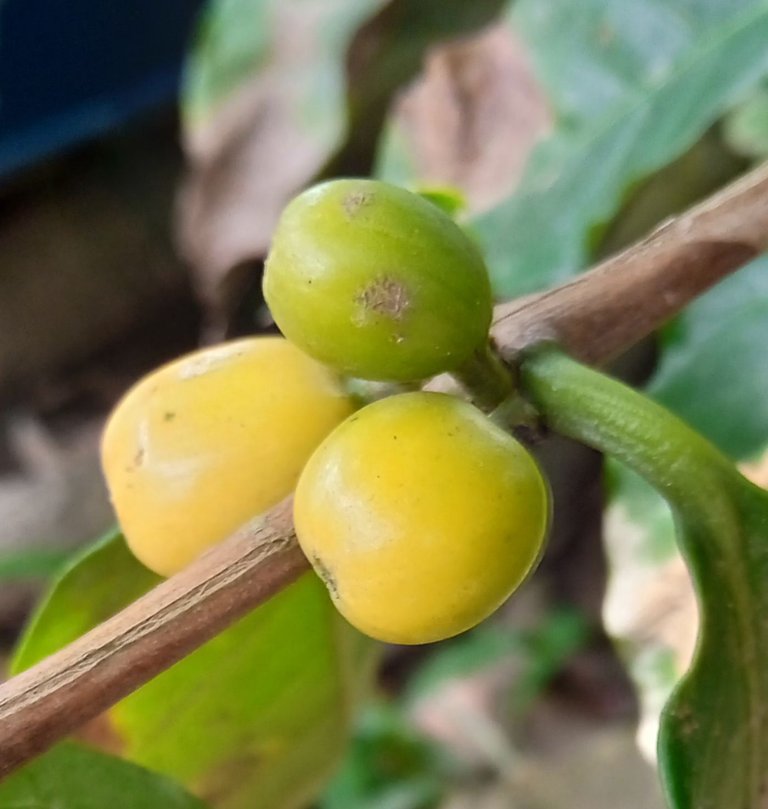
The coffee plants that produce yellow fruits are the hybrid varieties Caturra and Catuay, derived from Bourbon.
Las plantas de café que producen frutos amarillos son las variedades híbridas Caturra y Catuay, derivadas del Bourbon.
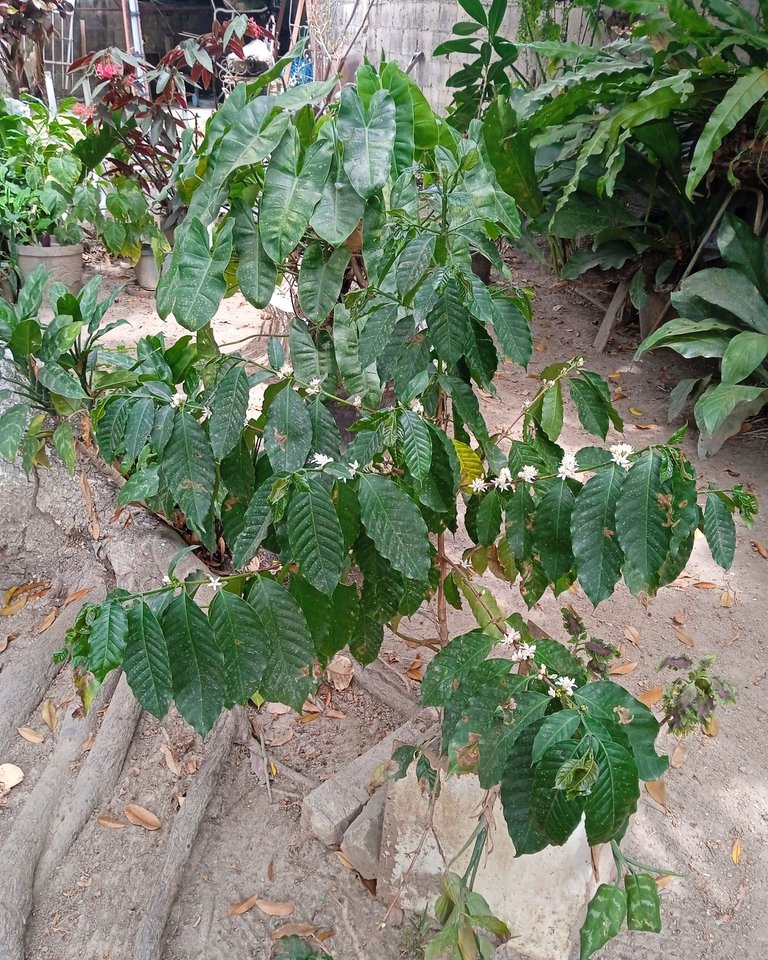
The coffee tree is a shrub native to Asia and Africa, currently cultivated in tropical America because its grains are a product that is in great demand worldwide. It can reach 4.5 meters and develops better at higher altitudes.
It belongs to the genus Coffea, family Rubiaceae, gives fragrant white flowers and has more than 120 varieties, with C. arabica being the most popular, followed by C. Canephora.
El cafeto, como se llama a la planta de café, es un arbusto originario de Asia y Africa, cultivado en la actualidad en América tropical por ser sus granos un producto que tiene gran demanda mundial. Puede Alcanzar los 4,5 metros y se desarrolla mejor a mayores alturas.
Pertenece al género Coffea, familia Rubiaceae, da flores blancas fragantes y tiene más de 120 variedades, siendo C. arabica la más popular, seguida de la C. Canephora.
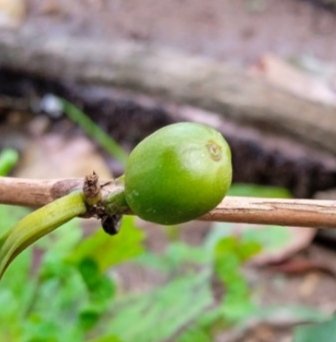
The coffee tree can bear fruit after five years and last for 100. The fruits take approximately 9 months to mature. The leaves also contain caffeine which is used by the plant to defend itself against predators. They are also used to prepare drinks and infusions in which their properties are used. Not all varieties of coffee trees produce caffeine.
El cafeto puede dar frutos a los cinco años y durar 100. Los frutos tardan aproximadamente 9 meses en madurar. Las hojas tambien contienen cafeína la cual sirve a la planta para defenderse de los predadores. Se usan tambien para preparar bebidas e infusiones en los que se aprovechan sus propiedades. No todas las variedades de cafeto producen cafeína.
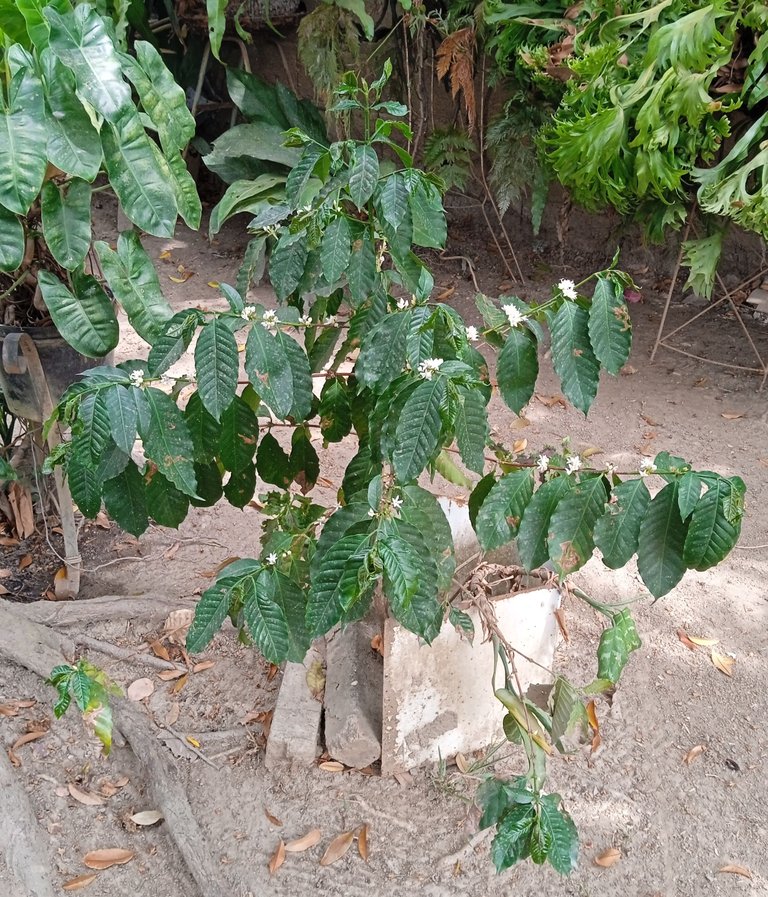
The coffee fruit is called a "cherry", although it is not a true cherry. The seed, from which the coffee bean originates, is called a bean, without being a true bean. There are two seeds in each fruit except in the "caracolillo", present in 5 to 10% of crops, which has only one seed, more spherical.
The coffee bean must be roasted and ground to take advantage of its properties.
El fruto del café es llamado "cereza", aunque no es una verdadera cereza. La semilla, de dónde se origina el grano de café, es llamada frijol, sin ser un verdadero frijol. Hay dos semillas en cada fruto excepto en el "caracolillo", presente en 5 a 10 % de los cultivos, que tiene sólo una semilla, más esférica.
La semilla del café debe tostarse y molerse para aprovechar sus propiedades.
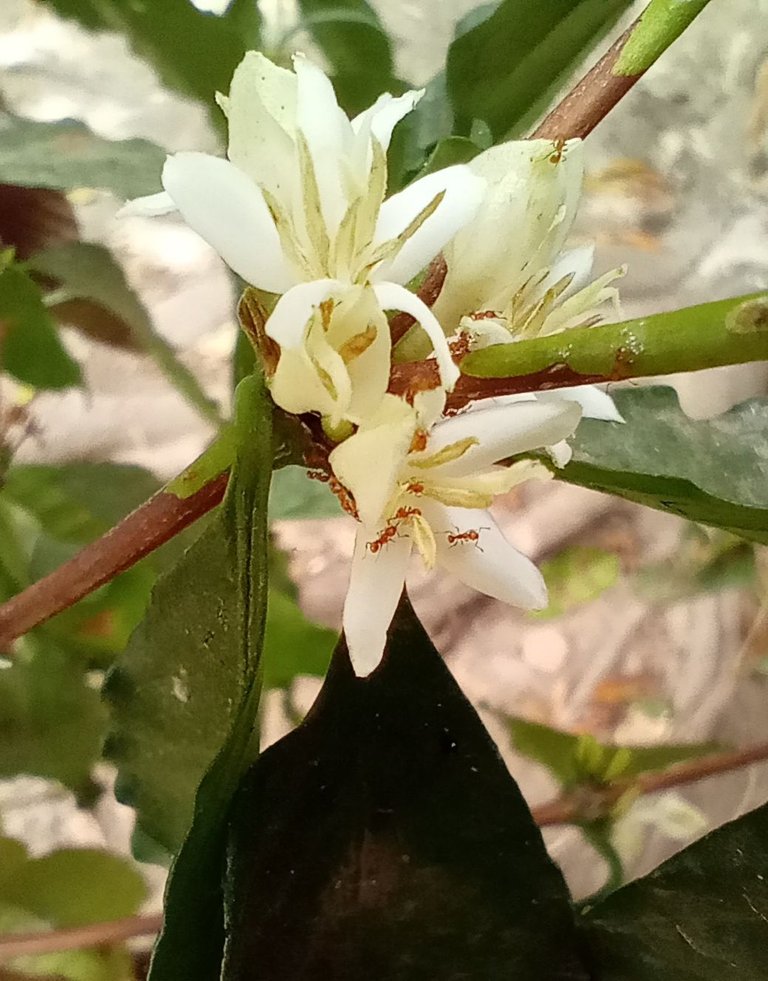
All photos were taken by myself, @elentogether, with my Xiaomi Redmi 9C smartphone.
To collect information I used articles about coffee on Wikipedia.
Thank you very much for stopping to read my post.
Todas las fotos fueron tomadas por mi misma, @elentogether, con mi teléfono inteligente Redmi 9C de Xiaomi.
Para recoger información usé artículos sobre el café en Wikipedia.
Muchas gracias por detenerse a leer mi post.
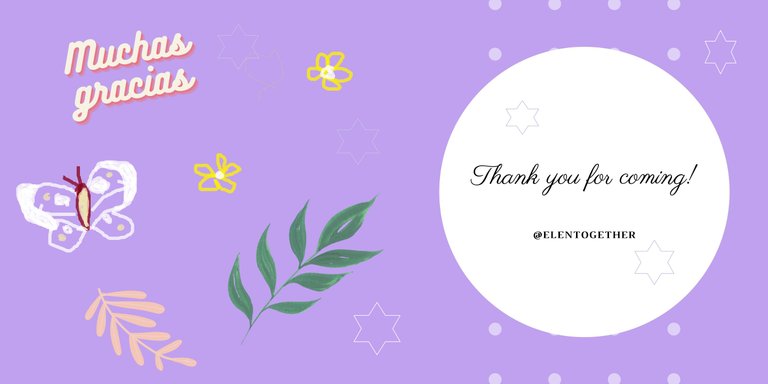
Image made with / Imagen hecha con Canva / Paint.
References / Referencias:
https://www.anacafe.org/uploads/file/9a4f9434577a433aad6c123d321e25f9/Gu%C3%ADa-de-variedades-Anacaf%C3%A9.pdf
